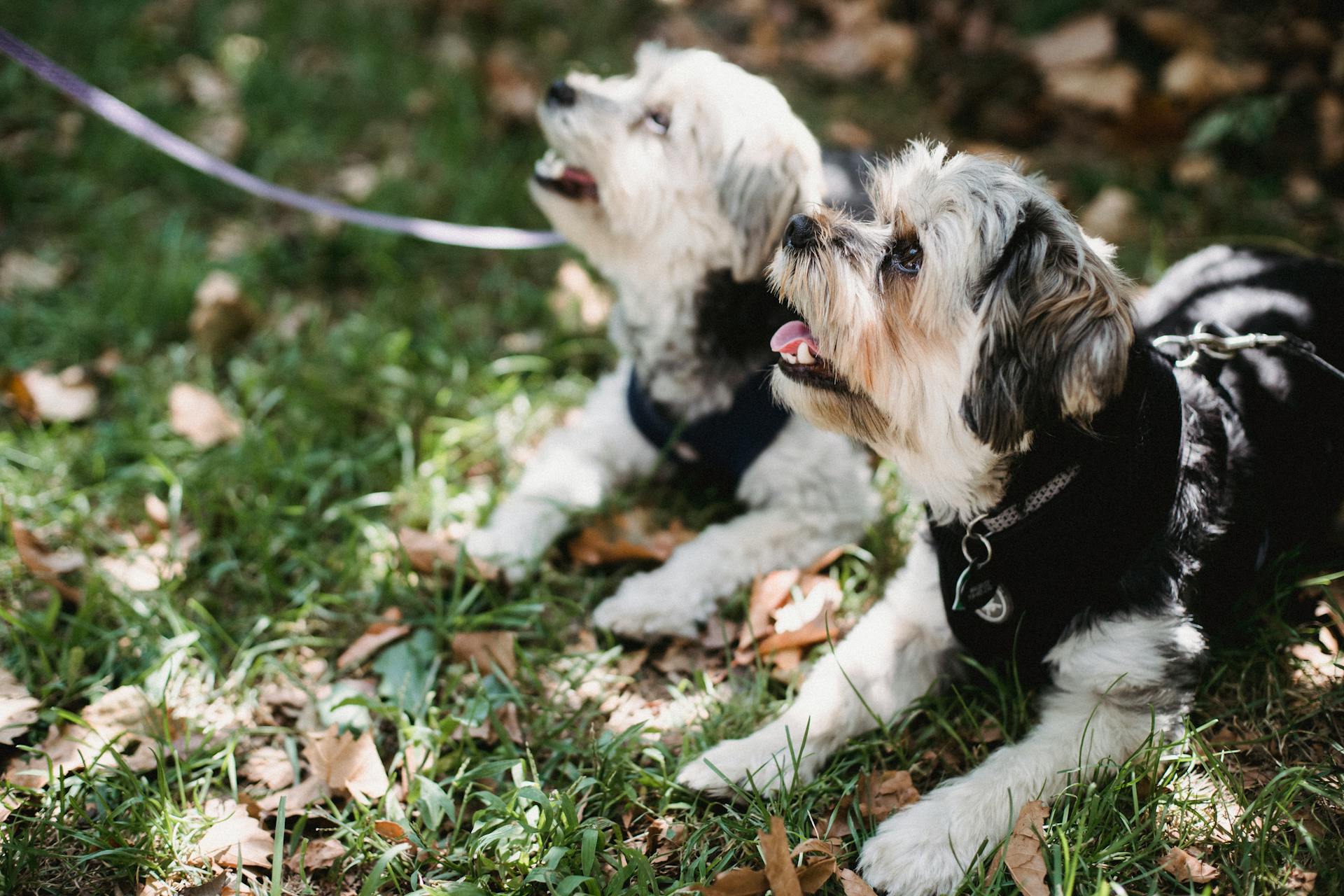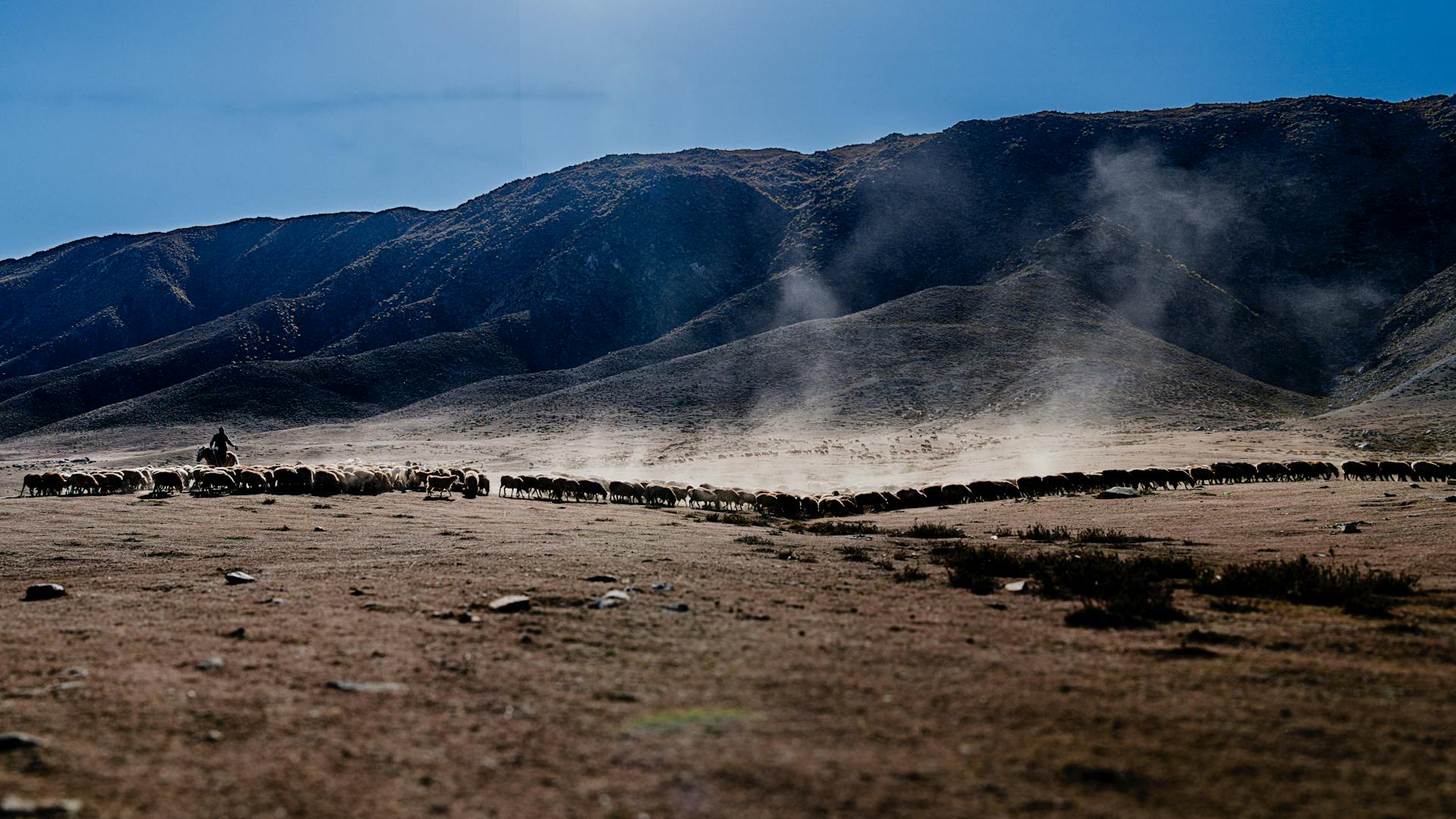
If you're considering bringing home a small hunting dog, you're probably torn between two great options: the Treeing Feist and the Mountain Feist. Both breeds are known for their hunting prowess and energetic personalities.
One of the main differences between the two breeds is their size. Treeing Feists typically weigh between 20-40 pounds, while Mountain Feists weigh between 20-35 pounds.
Treeing Feists are known for their strong prey drive and ability to tree small game like rabbits and squirrels. They're also highly energetic and require regular exercise to stay happy and healthy.
Mountain Feists, on the other hand, are bred for hunting larger game like raccoons and opossums. They're also highly intelligent and can be trained to perform a variety of tasks.
Suggestion: Breeds of Dogs under 25 Pounds
Intelligence
The Feist dog is known for being curious and intelligent, which can make for a fun combination. However, that same combo also means that these pups need a lot of mental stimulation to keep them from becoming bored.
They'll enjoy learning new things, having a job to do, and strategizing. A Feist will form a strong bond with their family and love playing with them.
Their intelligence is matched by their energy levels, so they require lots of physical stimulation as well. They'll need plenty of walks and more to work that energy off!
Because the Feist is a remarkably agile dog, you may want to consider setting up an agility course in the backyard. This will help keep them active and engaged.
A Feist will work best in households where someone is almost always home, as they could become anxious and bored if left on their own for hours at a time.
Pet Compatibility
Feists can get along with other canines if they're raised together, but new dogs may not be as fortunate, and Feists may fight with them.
Proper socialization from a young age is key to a Feist getting along with other dogs and animals.
Feists are not recommended for households with cats or small animals like hamsters due to their high prey drive and boundless energy.
Mountain Feists, on the other hand, can do well with children, thanks to their sturdy physique and friendly nature.
However, it's essential to supervise play between children and animals to prevent any biting or ear or tail pulling.
Teach children to approach dogs calmly and never try to take their food away, as no dog should be left unsupervised with a child.
Mountain Feists can get along with other dogs of equal or larger size, but their prey drive makes them unsuitable for households with small animals like guinea pigs, rabbits, or gerbils.
Care
A Feist's nails need to be cut about once a month, either by you or your groomer, to prevent overgrowth.
Mountain Feists are very energetic and need to be active all the time, so it's a good idea to take them on multiple walks during the day.
They love having playtime outside, whether it's playing fetch, running around in the backyard, or doing agility training.
Feists can get some exercise indoors, too, especially with play, but they are considered to be "outdoor dogs" and do tolerate cold weather very well.
You should brush your Feist's teeth a few times a week to promote good dental health, and your vet can show you how to do this if needed.
Feists can be stubborn and have a high prey drive, so it's a good idea to keep them on a leash or in a safe, enclosed area where you won't have to worry about their welfare or other animals'.
A Feist's diet should be formulated for a small-to-medium breed with high energy levels, and you should ask your veterinarian for recommendations about their diet.
Feists need a lot of mental stimulation to keep them from becoming bored, so they'll enjoy learning new things, having a job to do, and strategizing.
Health
Both Treeing Feists and Mountain Feists are generally healthy breeds, but like all dogs, they can be prone to certain health issues. Hip dysplasia is a common orthopedic condition in dogs, where the hip joint doesn't develop properly, leading to pain and discomfort.
Hip dysplasia can result in lameness, stiffness, and arthritis as the dog ages, and treatment may include medications, physical therapy, or surgical intervention. This is something to keep in mind if you're considering adding either breed to your family.
Elbow dysplasia is another orthopedic condition that can affect these breeds, involving a malformation of the elbow joint that leads to pain, lameness, and reduced joint flexibility. Treatment often involves medications, weight management, and in some cases, surgery to correct the joint abnormalities.
Allergic dermatitis is a skin condition that can be caused by environmental allergens like pollen, dust mites, or certain plants, leading to itching, redness, skin inflammation, and hair loss. Management typically involves identifying and minimizing exposure to allergens, using antihistamines or corticosteroids, and regular bathing with hypoallergenic shampoos.
Food allergies in dogs can occur when they develop sensitivities to specific ingredients in their diet, often proteins like chicken or grains, leading to symptoms like skin issues, digestive problems, and ear infections. Treatment involves identifying and eliminating the allergenic ingredient from the dog's diet, often through a trial-and-error process with hypoallergenic or limited-ingredient diets.
Here are some common health issues that can affect both Treeing Feists and Mountain Feists:
- Hip Dysplasia
- Elbow Dysplasia
- Allergic Dermatitis from Environmental Stimuli
- Allergy to Certain Food Elements
Varieties of Treeing Feist
The Treeing Feist comes in several varieties, each with its own unique characteristics. The Tennessee Red Feist is one of the most common varieties, known for its short, smooth coat and energetic personality.
The Tennessee Red Feist is a smaller breed, typically weighing between 20-40 pounds and standing 12-18 inches tall. This makes them a great choice for families with smaller children or for those who live in apartments.
The Red Feist is also known for its strong prey drive and ability to tree small game, making them a popular choice for hunters.
A unique perspective: Plott Hound Treeing Tennessee Brindle
Varieties of Squirrel Hunting Dogs
The Mountain Feist is a popular variety of squirrel hunting dog, known for its small size and high energy level. They're a great choice for families who have decently sized homes and yards.
Indigenous to the Ozark Mountains, Mountain Feists have been bred for centuries as low-maintenance dogs to hunt small vermin above-ground. They're also known as "squirrel dogs" due to their expertise in treeing small game.
There are many varieties of Feists, including the Mountain Feist, Barger Stock Feist, Mullens Feist, and American Treeing Feist. Each variety has its own unique characteristics and traits.
Mountain Feists are often confused with Mountain Curs, but they're not quite the same - Mountain Feists are decidedly smaller, for one. They're also known for being friendly, playful, and loving dogs.
The Mountain Feist may have looked a bit different in the past, but they've become refined with specific traits over time. Today, they're a beloved breed among squirrel hunting enthusiasts and families alike.
For your interest: Feist Squirrel Dog
Size
Mountain Feists are small- to medium-sized dogs. They typically range in height from ten to 22 inches tall.
Their weight can vary, but most Mountain Feists weigh between ten and 30 pounds.
Treeing Feist vs Mountain Feist
Treeing Feist vs Mountain Feist: What's the Difference?
The Treeing Feist is a small to medium-sized dog breed that originated in the United States.
Their short coats require minimal grooming, making them a great choice for busy owners.
The Mountain Feist is known for its hunting ability, specifically treeing small game.
They are highly energetic and require regular exercise to stay happy and healthy.
Treeing Feists are also excellent hunters, but they are generally more laid-back than Mountain Feists.
Mountain Feists are known for their strong prey drive and can be quite stubborn at times.
Treeing Feists are generally easier to train due to their intelligence and willingness to please.
The Mountain Feist has a longer lifespan than the Treeing Feist, typically living 12-15 years.

Treeing Feists are prone to eye problems and patellar luxation, while Mountain Feists are more susceptible to hip dysplasia.
Both breeds are relatively small in size, weighing between 10-20 pounds.
Overall, both breeds make great companions for active families or individuals.
Their small size and short coats make them perfect for apartment living.
Mountain Feists are generally more territorial than Treeing Feists.
Treeing Feists are highly social and love to be around people.
Their short coats shed minimally, making them a great choice for people with allergies.
Mountain Feists are known for their strong instinct to hunt and tree small game.
Their intelligence and athleticism make them a joy to watch and interact with.
Discover more: Dog Breeds with Naturally Bobbed Tails
Frequently Asked Questions
What breeds make up a Treeing Feist?
Treeing Feists are typically the result of crosses between hunting hounds and terriers, bred for their hunting ability and low-maintenance nature. This unique heritage makes them a distinct and fascinating breed.
Featured Images: pexels.com


